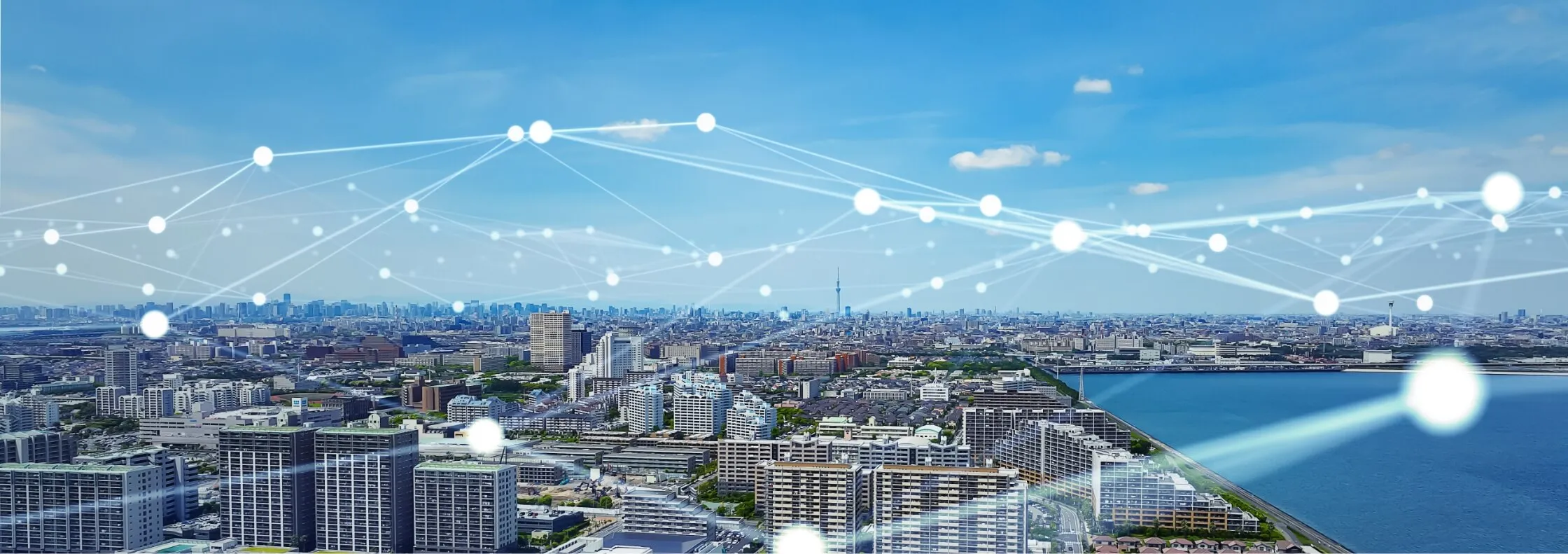
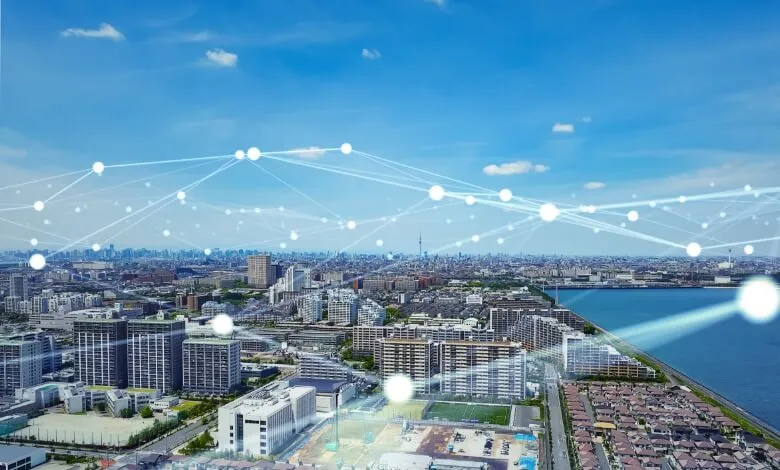

Stock Quotes (TSE First Section:1951)
2025/06/20 15:30
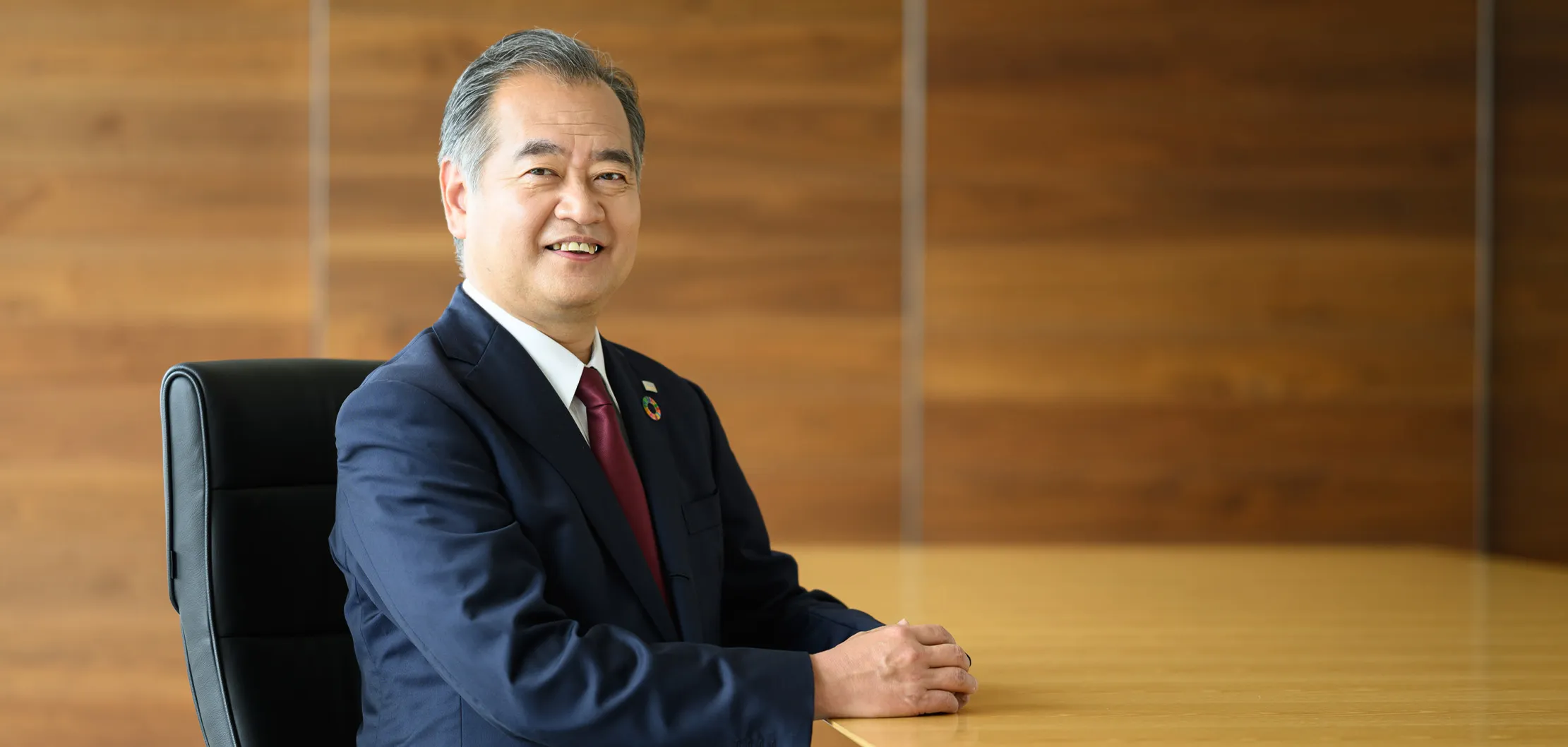
Since its founding in 1954, our group has contributed to solving various social issues and enriching people’s lives by expanding its business domains according to the needs of the times, with specialized technology in the information and communication infrastructure field as its core competence. Our Group’s greatest strength is the technological prowess we have developed through our extensive on-site experience. In the field of telecommunications, we provide consistent services throughout Japan for various communication equipment, from planning and design to construction, operation and maintenance. In the field of urban infrastructure, we use electrical and civil engineering technologies developed in telecommunications construction to contribute to the diverse aspects of society, including expressways, railways, data centers and renewable energy. Moreover, in the field of system solutions, we apply information and communication technology (ICT) to provide one-stop solutions to meet diverse needs, from system implementation projects such as digital transformation (DX) consulting and IT foundation formulation projects to the maintenance and operation of projects.
In recent years, the environment surrounding our Group has changed dramatically as technology has advanced and economic uncertainty has increased. To continually create corporate value in these circumstances, we believe that it is important for us to be a corporate group that combines the flexibility to autonomously and continuously innovate by flexibly responding to changes in the management environment, the resilience to single-mindedly refine and improve our ability to persevere, and the technological prowess that we have cultivated.
With the group purpose of “Bring the benefits of connectivity to all”, our group aims to solve social issues, the universal mission of companies, by connecting and integrating diverse engineering through innovation, striving to become a company needed not only in Japan but also in the global society. We kindly ask for your continued warm understanding and support for our group.

2030 Vision
People, goods, information and infrastructure in society will all be connected through sensors and networks, and engineering for connecting them is required to integrate an array of technologies.The Group aims to contribute to solving social issues in Japan and on a global scale by integrating its engineering capabilities, which it has deepened through new technologies and open innovation, and using those capabilities to provide solutions for all social infrastructures, including information and communications infrastructure.

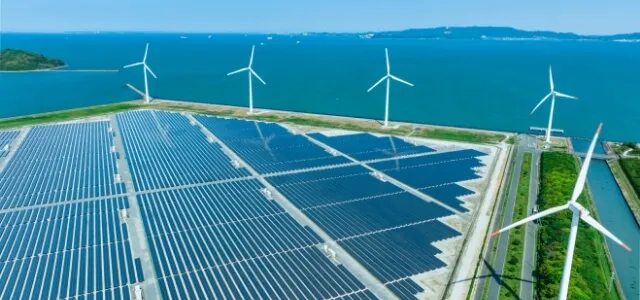
01 Carbon-neutral society

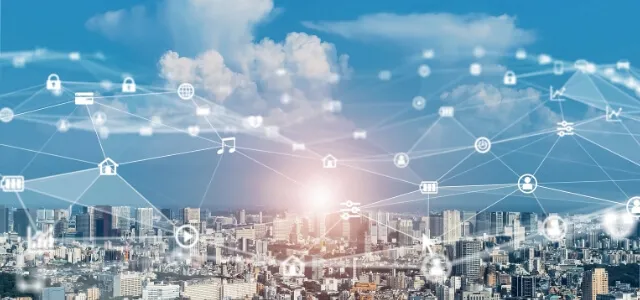
02 A smart society where people live healthy and vibrant lives


03 Global society where diversity is enjoyed


04 Society without poverty or inequality
Medium-Term Management Plan (2021-2025)
The Group has developed a Medium-Term Management Plan that describes strategies and performance targets in the coming five years to achieve the 2030 Vision.
EXEO Group addresses social issues and contributes to solving them through our business, achieving sustainable growth together with society.
Regarding the business and accounting situations, etc. described in the financial statements in security reports, the main risks that the operator recognizes as having the possibility of significantly impacting the financial condition, business performance, or cash flow condition of the KYOWA EXEO Group are as stated below.
These main risks are described as matters that should be addressed as a priority, in view of the extent of their impact and frequency of occurrence. The Group identifies and assesses these risks on a regular basis by connecting them to its material issues (essential issues to be addressed as a corporate group) that it announced in May 2023. However, this is not an exhaustive list of all the risks facing the Group and other risks besides those stated also exist. The Group could be impacted by any such risk factors.
Matters concerning the future contained in descriptions of this document are based on the Group’s assessments as of the date of submission of the securities report.
In the Group’s risk assessment, it assesses and reviews not only its business activities, management plans and other inherent risks but also the social situation and social issues that have been attracting more attention in recent years.
Risk factors are identified in view of all possibilities and assessed on a regular basis. Matters that should receive a priority response based on their impact and probability of occurrence are shown in the risk heat map.
Risk management and the monitoring of each risk factor are implemented by the relevant division providing support in that area of business. Events that are assessed to be serious risks are reported to the Business Risk Management Committee and specific initiatives for mitigating these risks and improving the Group are implemented through the Group’s risk management system.
We have developed Risk Management Rules that set out basic matters regarding risk management. Additionally, we have established risk categories and assigned corresponding divisions to manage them. The Business Risk Management Committee has been created to serve as the Group-wide risk manager. We have implemented a system for identifying and assessing risks throughout the Group. Furthermore, we have developed and are implementing a business continuity plan (BCP).
We have also implemented a system for establishing crisis management committees to minimize losses when unexpected risks materialize. We establish a crisis management committee when a crisis that could significantly impact our business occurs.
Risk Heat Map
(Possibility of Occurrence and Extent of Impact)
| Large | Dependence on specific fields of business |
Violation of laws and regulations and compliance (Including human rights violations) Development of overseas operations (Overseas political and economic situations, etc.) Occurrence of major injury or death or equipment damage Securing and cultivation of human resources M&A activities and business alliances Internal control (Including subsidiaries and associates) |
Occurrence of natural disasters (Including the spread of infectious diseases) Occurrence of information security incidents Surges in procurement prices of materials |
| Medium | uality management, defects, construction failures |
Fluctuation of interest or exchange rates, funding Concerns about credit standing of business partners (customers) (credit checks, contract reviews) Inappropriate labor environment (overwork, taking leave) Delay in digital transformation or innovation |
Climate Change |
| Small | Infringement of intellectual property rights | Decrease in market price of assets held | |
| Low | Medium | High |
List of Main Risks
| Risk factor | Risk assessment | Details of risks | Measures, etc. to address risks |
|---|---|---|---|
|
1. Natural and other disasters(Including the spread of infectious diseases) |
Risk Exposure: LargePossibility of occurrence: HighYear-on-year comparison → |
A major disaster, etc. or an infectious disease pandemic and other unforeseen circumstances accompanying the above, such as the inoperability of infrastructure or shortages of fuels, materials or personnel, could lead to projects being halted or postponed, or damage to office buildings and equipment, which would impact the performance of the Group and its business continuity plan (BCP). |
The Group has worked to avoid risks and minimize damage from natural disasters, epidemics and other similar contingencies mainly by carrying out drills, developing rules and manuals, introducing staggered arrival times and teleworking programs, and implementing influenza vaccination in various occupational fields. These efforts are to ensure the continuity of business while preventing harm to personnel is the Group’s top priority. With an increasing number of natural disasters such as more powerful typhoons, torrential rain and frequent earthquakes in recent years, as well as escalating new threats such as novel viruses, the Group sees it as essential to enhance its risk management capability in business management. In April 2020, the Risk Management Division was established as part of group-wide efforts to secure the provision of services, through the inspection and maintenance of various facilities and equipment, to deal with reputation risk arising from a pandemic, etc., and to carry out the minimum necessary business operations based on predefined roles in the event of a disaster with the aim of ensuring stable and smooth business management from customers’ perspectives. |
|
2. Occurrence of information security incidents |
Risk Exposure: LargePossibility of occurrence: HighYear-on-year comparison → |
In the course of our business operations, the Group handles important data for customers, including the technical or personal data of customers and other parties. Unforeseen circumstances, such as the loss, theft or incorrect operation of personal computers, smartphones, etc., information leakage due to unauthorized system access, computer virus infection or other cyberattack from outside the Group, may cause important information to be leaked or disable computer systems. This could result in the loss of customer trust as well as an obligation to pay damages or take other actions, which could impact on the performance of the Group. |
We have established an information security management system and operate it. A chief information security officer has been appointed, and an Information Security Committee has been established. In January 2025, we created a Cybersecurity Division to enhance information security governance. We fully recognize the significance of effective information management. To continuously enhance our information management practices, we have achieved the certification of our information security management system and attained the right to display the PrivacyMark. The EXEO Security Incident Response Team (EXEO-SIRT), which functions as a CSIRT/SOC, is responsible for centrally monitoring and managing security technologies. The team aims to ensure the safety and security of critical assets that need to be protected, including information and devices, by detecting and defending against cyberattacks. They also provide support in our responding to malware infections and information leaks, thereby minimizing damage when incidents occur. With renewed recognition of the importance of strengthening group-wide risk management, the Group will strive to maintain and improve the security of internal systems and those systems offered by customers. We also engage in activities to increase all of our employees’ awareness of information security, including e-learning programs, targeted email attack training, and security awareness study sessions. Furthermore, we share information about cyberattack trends and actual incidents observed within the Group and at other companies to constantly enhance awareness, prevent damage, and improve information security literacy. |
|
3. Surges in procurement prices of materials |
Risk Exposure: LargePossibility of occurrence: HighYear-on-year comparison → |
Difficulties in procuring materials, including raw materials and other resources, as a result of damage sustained by suppliers in a natural disaster, social unrest (including but not limited to war, act of terror, infectious disease and geopolitical risk), deterioration in business performance or other factors could lead to construction stoppages and affect the agreed construction periods. In addition to significant increases in procurement prices, the increase of fuel costs, logistics expenses, and labor and outsourcing costs could adversely affect the Group’s business performance. Moreover, considerable time will be needed to resolve the semiconductor shortage caused by factors that include the U.S. government’s tariff measures, the prolonged Russian invasion of Ukraine and the escalation of conflicts in the Middle East. Furthermore, the extended work periods, etc. associated with the long lead time for the procurement of materials for mobile communication base stations may affect the Group’s business performance. |
As for the rising procurement costs of materials, raw materials and other resources, we are working to mitigate risk by implementing measures such as ordering materials early, diversifying suppliers, passing on higher costs through construction prices and incorporating conditions on price increases in contracts. Regarding the semiconductor shortage, we are monitoring supply and demand and are also endeavoring to minimize its impact by planning construction work carefully, including first carrying out the construction work to the extent that goods are available and completing the work once we have all the goods we need, from the viewpoint of keeping to the delivery dates agreed upon with customers. Currently, we anticipate that the impact of the United States’ reciprocal tariffs and other tariff measures on our procurement of materials will be limited. |
|
4. Climate Change |
Risk Exposure: MediumPossibility of occurrence: HighYear-on-year comparison → |
Climate change is one of most urgent social issues which have an enormous impact on the sustainability of society. The Group positions solving social issues as its universal mission and it has set the “development of environmental businesses that contribute to the reduction of greenhouse gas emissions and reduction of the environmental impact of its business activities” as one of its material issues. Depending on the action we take, the major risks outlined below could affect Group performance and credibility over the medium and long terms. (1) Transition risks The Group’s failure to adapt to the transition to a decarbonized society or to customer needs for adaptation to climate change could lead to a decline in corporate value and a loss of orders as a result of a negative assessment of the Group among customers, investors and other stakeholders, as well as higher costs associated with the introduction of carbon pricing and other measures. (2) Physical risks The flood damage that is expected to occur as result of climate intensification will increase the risk of damage to buildings, construction sites, facilities and other property, and the increase in temperature will increase the risk to health on outdoor construction sites (heat stroke, etc.) and will lead to lower operating efficiency, delays in the delivery of ordered work and higher costs to combat climate change. |
In response to transition risks, we are actively promoting the effective utilization of renewable energy for our electricity use in our business activities to reduce greenhouse gas emissions and expand the business to meet the growing demand for renewables, such as the construction of wood biomass fueled power plants and offshore wind farms. Regarding physical risks, the Group will work to strengthen its safety management and emergency preparedness skills guided by its BCP and work to improve the efficiency of construction sites using ICT. We will continue to carefully monitor the effects of climate change, as well as national policies and social trends regarding the reduction of greenhouse gas emissions. Additionally, we will actively work to help solve social issues by focusing on reducing greenhouse gas emissions and promoting renewable energy-related businesses. In July 2024, our greenhouse gas emissions reduction target for 2023 is certified by the Science Based Targets Initiative (SBTi) as science-based targets (SBTs) in accordance with the Paris Agreement. For details, please refer to 2. Approach to Sustainability and Sustainability Initiatives, (4) Climate Change. |
|
5. Violation of laws and regulations and compliance(Including human rights violations) |
Risk Exposure: LargePossibility of occurrence: MediumYear-on-year comparison → |
Laws including the Construction Business Act, the Subcontract Act, the Anti-Monopoly Act, the Industrial Safety and Health Act, and environmental laws restrict the Group’s businesses. Any revision or abolition of laws, new restrictions, changes in applied criteria, etc. could affect the Group’s business performance and credibility. Employees being engaged in fraudulent practices, harassment or other human rights abuses throughout the supply chain, the leakage of personal information or trade secret information or other compliance violations could damage the Group’s social credibility and affect its business performance and external evaluations of the Group. |
The number of new laws and regulations related particularly to the environment and ways of working that have been established and revised has been increasing in recent years, and related departments within the Company monitor legal changes and produce an appropriate response to the legal changes known to the Group companies prior to their enforcement. In this way, the Group is building a system to ensure it promptly complies with laws and regulations in a unified way. The Group conducts legal compliance self-inspections once a year, confirms the status of compliance in internal audits and takes corrective actions. Moreover, the Group is enhancing compliance by implementing online training programs for all employees and level-specific training for officers, leaders and young employees and by promoting the use of effective whistleblowing systems and awareness-raising activities using posters, etc. We believe that respecting human rights, including preventing harassment, is an important responsibility that corporations have to society, and we have established the EXEO Group Human Rights Policy. We work to increase people’s understanding of this policy within the Group. We aim to foster an environment where diverse values are respected. Our diversity and inclusion initiatives received PRIDE Index 2024 silver certification. In 2024, we established a procurement policy and guidelines to encourage our supply chain partners to comply with laws and regulations and respect human rights. For information about our human rights initiatives, please refer to 2. Approach to Sustainability and Sustainability Initiatives, (3) Respecting Human Rights. |
|
6. Development of overseas operations(Overseas political and economic situations, etc.) |
Risk Exposure: LargePossibility of occurrence: MediumYear-on-year comparison → |
The Group operates refurbishing businesses that utilize used IT devices and various solution businesses in many countries primarily in Southeast Asia. There are a variety of risks, including rapid changes in political and economic circumstances, exchange rate fluctuations, unexpected changes in laws and regulations, natural disasters including earthquakes and typhoons, and infectious diseases epidemics. There are also concerns about risks arising from the U.S. government’s tariff measures, the prolonged Russian invasion of Ukraine, and conflicts in the Middle East. The situation requires continuous attention, given issues such as surging raw material prices and the impact of damage to supply chains. Any difficulties in operations due to the occurrence of unexpected problems and a failure to deal with the risks these problems present could hinder the expansion of global business in the medium term and affect Group performance. |
In Asia, we have bases including in the Philippines, Thailand, Singapore and Indonesia. To strategically manage and facilitate the management of the operations of these overseas subsidiaries, we established the EXEO GLOBAL regional headquarters in Asia in Singapore in November 2018. In July 2023, we completed the construction of and opened a new global headquarters building, The Pulse, to integrate EXEO GLOBAL and its eight subsidiaries. This has enabled the Company to strengthen its relationships with its overseas subsidiaries in terms of corporate governance and risk management through the enhancement of business synergy related to ICT infrastructure and technological fields, and the timely collection of information by Directors of the Company who are dispatched to local enterprises or who concurrently serve as officers of subsidiaries. Moreover, in an effort to improve the internal whistleblowing system in response to the growing overseas business, a global whistleblowing reporting desk was established for the Group’s employees working abroad. We identify expected risks and examine responses before making individual business investments and ask external experts to review matters with which we do not have adequate knowledge or experience. While we cannot fully hedge against the impact of exchange rate fluctuations in relation to our foreign currency denominated assets and liabilities, we seek to mitigate the risk mainly by concluding forward exchange contracts and holding assets and liabilities denominated in the same currencies so that we can offset foreign exchange losses. We currently anticipate that the series of U.S. tariff measures, including the reciprocal tariffs, will have only a limited impact on our results. However, the situation is rapidly changing, and the future is uncertain. We will continue our business operations while closely monitoring potential indirect effects, such as economic downturns, supply chain disruptions, and reduced capital investment by customers. |
|
7. Occurrence of major injury or death or equipment damage |
Risk Exposure: LargePossibility of occurrence: MediumYear-on-year comparison → |
A major accident resulting in death, injury, or equipment damage as a result of unforeseen circumstances in the Group could result in the loss of customer trust and could lead to the need to pay compensation, reduced chances for orders, or other consequences that impact the performance of the Group. |
The Group works day-in, day-out to prevent accidents resulting in death, injury, or equipment damage, by making every effort to ensure safety and quality and strengthening site management. We have established and nurtured a safety and quality culture. In the five years that started with FY2021, our slogan has been “the evolution (deepening and progression) of the safety and quality culture.” We aim to eliminate accidents, enhance quality, and create added value, ultimately becoming a company and a group that is safe, secure, and reliable. To mitigate risks, the Group is above all committed to the implementation of essential safety measures. We focus on reducing or eliminating hazardous work in the planning stage. We also implement engineering measures, introducing heavy machinery and vehicles with safety features that ensure they cannot operate unless specific conditions are met, and we have also introduced tools that enable safe working conditions. We actively implement management measures. We have installed network cameras to monitor working conditions and utilize artificial intelligence and other digital technology to inspect safety equipment. We also provide on-site hazard prediction training. We focus on developing our workforce, particularly our on-site managers. We have introduced interactive patrols to internally share best practices and commendable actions. Our goal is to enhance our ability to learn from best practices. We aim to foster safe actions by encouraging each employee to prioritize their own safety. We refer to this as “safety thinking.” Our aim is to make this approach to safety a habit for everyone. We have obtained industrial safety and health management system certification and quality management system certification to fulfill our corporate social responsibilities (CSR) , we ensure, in particular, the safety and health of our employees. By doing this, we enhance the sustainability of our business. |
|
8. Securing and cultivation of human resources |
Risk Exposure: LargePossibility of occurrence: MediumYear-on-year comparison ↗ |
We acknowledge the challenges we face in securing human resources. These challenges are the result of a declining birthrate and an aging population, which has led to the aging of engineers and the need for diverse working styles. Additionally, we face intense competition in the recruitment market. We also recognize the difficulty of responding to the latest technological trends while considering the business environment within the industry, and the difficulty of developing the next generation of management executives. If we are unable to secure and develop sufficient human resources, it could adversely affect the Group’s competitiveness, employee morale, and our business operations, performance, and financial position. |
We actively recruit new graduates and experienced professionals throughout the year. We also aim to hire global human resources. We aim to enhance employee engagement and reduce turnover by reviewing compensation, fostering a comfortable work environment, improving employee training, and promoting growth through work. In FY2022, we launched a program to develop people who will lead our transformation in response to the rapid changes in the external environment. We are implementing measures to increase employee engagement by recognizing employees’ initiatives and respecting their autonomy. To develop our engineers, we provide on-the-job training and other training programs, including reskilling programs to facilitate the transfer of human resources between businesses. We also encourage engineers to obtain the specialized qualifications and skills that are necessary for their roles. We plan to create a company-wide human resources database and develop a system that allows talented individuals to actively contribute across the entire Group. For detailed information about human resource development, please refer to 2. Approach to Sustainability and Sustainability Initiatives (2) Human Capital and Diversity. |
|
9. M&A activities and business alliances |
Risk Exposure: LargePossibility of occurrence: MediumYear-on-year comparison → |
The Group believes that mergers, acquisitions and business alliance strategies are important and an effective part of business expansion, etc. However, a failure to identify effective investment opportunities and results of investments being lower than expected could affect Group performance. Moreover, if the Group enters new business domains or new markets through M&A activities or by other means, risks specific to the new domains or markets could be added. If goodwill arises, our assumption is that we have sufficiently stable earnings power to exceed the amortization of goodwill. However, if the execution of the business plan made at the time of the acquisition is hampered due to changes in the business environment, the competitive landscape or other reasons after the acquisition, and progress is not made as planned, the Group may incur an impairment loss related to goodwill, etc. which could affect Group performance. |
In the 2030 Vision and the Medium-Term Management Plan (FY2021 to FY2025), the Group states that it will actively and strategically invest, including in M&A activities. The Group must always consider the possibility that risks related to these investments may materialize. When engaging in mergers and acquisitions or forming business alliances, the Group carefully analyzes future market trends and synergies with the Group and identifies potential risks associated with the relevant companies utilizing the findings of investigations conducted by external lawyers and financial advisors. The Group uses the weighted average cost of capital (WACC) as a hurdle rate. After this evaluation, the Group determines whether the strategic investment in the merger, acquisition, or alliance will enhance the Group’s corporate value. Leveraging our knowledge and experience, we review our investment criteria as necessary. After M&A activities, etc., the Group monitors developments such as the progress of business plans made during the planning stages of M&A activities, etc. and the extent to which synergy is generated. We will establish a process from due diligence, PMI, and monitoring for the improvement of the activities, aiming to enhance our efforts to reduce the risk of incurring impairment losses on goodwill. |
|
10. Internal control(Including subsidiaries and associates) |
Risk Exposure: LargePossibility of occurrence: MediumYear-on-year comparison ↗ |
If internal controls are ineffective, it may be impossible to ensure business is properly conducted, potentially harming the Group’s performance and reputation. |
The Company has developed a system to achieve compliance with laws and regulations, operational effectiveness and efficiency, and the reliability of financial reporting under its basic policy on the internal control system and has established the Internal Control Committee (chaired by the President & CEO), which monitors and evaluates the overall operation of the internal control system. The Company has established the Compliance Committee, Business Risk Management Committee, and Information Security Committee under the Internal Control Committee. The basic guidelines for establishing and operating the internal control system that have been decided by the Board of Directors are described in 4. Status of Corporate Governance. |
|
11. Dependence on specific fields of business |
Risk Exposure: LargePossibility of occurrence: LowYear-on-year comparison → |
The core business of the EXEO Group is building and constructing information and communication networks, and transactions with telecom carriers account for a large proportion of transactions. This trend is expected to continue. Changes in the way telecom carriers carry out and structure their capital investments as a result of market trends in the telecommunications industry, technological innovation, or other factors could impact the business performance of the Group. |
During the ongoing mid-term management plan (FY2021–FY2025), the Group is implementing growth strategies in each of the three business segments below and is working to expand growth opportunities, diversify risks and enhance its competitive capabilities in the individual segments. (1) Telecom carrier business This is the Group’s mainstay business that is 38% of its net sales. It has the strength of offering one-stop services from design and construction to the maintenance and operation of telecom facilities leveraging its experience and the technology it has accumulated since its foundation. Going forward, it is expected that the area of 5G communications will expand and that telecom infrastructure will become even more sophisticated and technological innovation will continue in this area. (2) Urban infrastructure business This business is 32% of the Group’s net sales. This field of business is expected to contribute to the expansion of the renewable energy market for green transformation (GX) and the establishment of a decarbonized society by offering one-stop services for various construction projects in telecommunications, electricity, urban engineering and other areas. (3) System solutions business This business is 30% of the Group’s net sales. In this business segment, companies and government organizations’ needs for digital transformation strategies are expected to increase and the market related to the introduction of education products and IoT devices is expected to expand. Having placed its headquarters for the above business in Singapore, the Group is working to cultivate the Southeast Asia market where economic growth is ongoing. |
Learn more